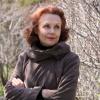
The Finnish composer Kaija Saariaho, who died nearly a year ago, assumed her place in the musical pantheon by forging a warm, inviting, yet stimulating style out of the abstruse innovations of the 20th-century avant-garde. On Sunday, March 3, Left Coast Chamber Ensemble celebrated Saariaho’s legacy in the most fitting way: by playing her music, as well as by inviting Oakland pianist and composer Monica Chew to write new music inspired by Saariaho.
Throughout the concert, the ensemble met intricate technical demands with the seeming ease required to realize music that subsumes experiment into expression. The venue was Noe Valley Ministry, one of the area’s most attractive and comfortable spaces for chamber music and a perfect place to hear a composer who has found a well-earned home in our new musical vernacular.

The opening work was Saariaho’s Dolce Tormento, a duo for piccolo and cello. “Sweet torment” is from a Petrarch sonnet, and Saariaho’s setting, with its unusual high-low combination of timbres and freely conceived voicing of overtones, illustrates the challenge of playing her music. Maybe the torment is for the musicians themselves, but flutist Stacey Pelinka and cellist Leighton Fong made this demanding music seem like an endlessly renewable creative joy.
In a short five minutes, the piccolo comes alive with breezes of breath, whistling trills, multiphonics, and pitch bends up and down, all with sotto voce interjections of Petrarch’s poetry. In this performance, Dolce Tormento transcended its evident origins as a text collage. The audible rain and wind outside the church could only have been part of the performance had Saariaho ordered it from the heavens.
Next, Fong performed Sept Papillons, a sequence of miniatures for solo cello. In fleeting lives, these butterflies pass through an ecosystem of tappings, bowings, brushings, and multiphonics. Slip-sliding coexists with classical broken chords that allude to J.S. Bach’s iconic cello suites. The expansion of harmonies from overtones led the listener’s mind effortlessly beyond the “noise.” Fong’s performance seemed to suspend time, perhaps by focusing on the flow and not emotionalizing the inherent sonic intensity.
Together, the two opening pieces were a perfect setup for Oi Kuu, a duo that had Pelinka on bass flute. Saariaho’s careful, colorful exploration of overtones gives this work unexpected variety. Her musical language is communicated best by people who have studied and lived it, as Pelinka and Fong have. This is especially true for a composer who admitted that sound was always forming in her head but that she could not formulate it into music until she had the technique.
Two different versions of Saariaho’s Mirrors framed intermission. This piece was designed as an interactive game for assembling music stored digitally as fragments. Perhaps it was the cumulative ear-opening of Left Coast’s performances, but the first presentation seemed noticeably disjointed, yet the second was relatively seamless.

Chew’s piece, What comes before, featured Fong, Pelinka on alto flute, and Allegra Chapman on piano. It’s a remix of fragments from Saariaho’s music, though Chew goes several levels beyond quotation in honoring the late composer. The piece makes something original out of instruments Saariaho favored and with equal variety, not just in its application of techniques but in the time-honored structure of providing cadenza-like roles and pairings for the instruments.
If anything, What comes before makes more of the performer-as-personality than Saariaho does. Chew invites us to toss Saariaho over and over in our minds, just as generations of composers will have to process her influence. And the performers clearly had the full measure of Chew’s compositional game.
Two additional works not by Saariaho filled out the program. In her own description, composer Kay Rhie says her Three Miniatures for Piano processes the emotions of experiencing new social environments. The composition was secure in the middle of the concert, though the spare harmonic building blocks of the opening were quite a contrast to what had come before. Chapman made the most of these textures, just as she gave a commanding account of the rhythmically driving passages, which are vaguely reminiscent of Sergei Prokofiev’s late piano sonatas.
Knowing Saariaho’s music recalibrates how we listen to music of the past, Left Coast closed the program with Prokofiev’s Flute Sonata. Pelinka and Chapman made a case for the improbable place of this bravura vehicle on the concert. The performance was a startling reappraisal of the sonata. Most remarkable was the balletic feel, underpinned by a steady, gently conceived rhythmic pulse. The music was sustained in graceful melodic lines. Indeed, Prokofiev wrote the sonata while also composing his ballet Cinderella.
Most important — and most Saariaho-like — was the satisfying color palette the performers used to enhance Prokofiev’s melodic invention. It was as if Pelinka’s flute had endless shades and characterizations within her warm, silvery tones. It was as if color was ingrained in the structure of the sonata, as in the other pieces on the program. This performance made clear that musical tradition is fundamentally enriched by Kaija Saariaho’s legacy.




